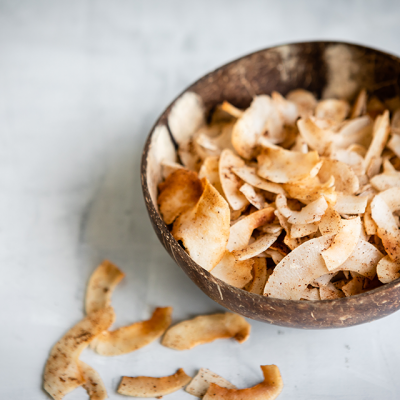We all want the youthful glimmer of supple, radiant skin that glows. And it’s not something that should take forever in the morning to apply before you head out the door either. Healthy skin communicates more than just good looks. Naturally, healthy skin is a reflection of your overall health. It says things about your hormones, gut function, and inflammatory status.
One easy way to boost your skin health is to include healthy fats in your diet regularly. A lipid membrane surrounds each and every skin cell. They are critical in letting the good stuff in, keeping the bad stuff out and maintaining beautiful, hydrated skin. You want those skin cells to be surrounded by healthy fats, which is why it’s so important to include plenty of essential fatty acids found in wild fish, nuts, egg yolks, greens and grass-fed animal products. Another favorite fat that I eat every day is coconut oil. Almost 65% of the fat in coconut oil is medium-chained triglycerides or MCT’s.
Why are MCT’s so special?
Because the length of their carbon chain allows them to better permeate cell membranes more easily than other types of fats. Our body doesn’t have to work as hard to break up as many carbon bonds of the fat molecule, making them more readily absorbed. The MCT oil in coconut oil gets sent directly to your liver, where they are used for energy, as opposed to fat storage. This is great news if you’re looking to lose weight but still maintain muscle mass. Additionally, coconut oil satiates your appetite and will help you to feel fuller longer. It will help give you more stable energy and better moods…no more blood sugar roller coasters. But mostly, I really love how it supports autophagy.
When your body breaks down fat from coconut, ketone levels are increased, especially in the absence of carbohydrates. This process supports your body in activating its natural autophagy process – your inner cellular clean-up crew—helping you to repair damaged cells and tissue, restoring your natural glow. The MCT’s found in coconut oil support a healthy gut environment. One particular type of MCT—lauric acid, has antimicrobial properties that keep harmful bacteria, viruses, parasites and fungus like candida in balance. Those with compromised digestive function seen in leaky gut syndrome will benefit from the anti-inflammatory and easily digestible fats in coconut oil.
There are so many ways to enjoy the fat from coconut. You can cook with coconut oil, add coconut butter to smoothies or make “fudge” from it or you can mix MCT oil or coconut oil into your tea like I do with my AutophaTea. But what about when you are on the go and need a quick snack? Instead of grabbing a bag of chips or something junky, just stash some of these tasty coconut chips in your purse.
Sea Salt Toasted Coconut Chips
These toasted coconut chips are perfect for those who want a salty, fatty crunchy snack like a potato chip, without the oxidation and inflammation that comes along with regular chips. The fats used in commercial potato chips are often pro-inflammatory, low quality and rancid—a disaster for activating your autophagy. Not to mention the carbohydrates found in white potatoes, especially in chip form, really does make it impossible to eat just one!
These addictive high-carb snacks can easily spike your blood sugar and trigger insulin release. Instead, give these toasted coconut chips a try! I’ve included a variation with Ceylon cinnamon for a richer polyphenol snack to activate your autophagy and enhance your glow. Increasing your intake of phytonutrients and polyphenols from vegetables, herbs, and spices like Ceylon cinnamon is a wonderful way to get the most out of a higher fat diet while increasing your body’s ability to activate autophagy.

Toasted Coconut Chips
Makes 2 cups
Ingredients
2 cups large coconut flakes 2 teaspoons coconut oil, melted ¼ teaspoon Himalayan salt, or more if preferred 1 teaspoon ground Ceylon cinnamon (optional)
Directions
Preheat oven to 325F. Mix coconut flakes, oil, and salt together until well combined. Spread in an even layer in a glass baking dish, or parchment lined baking sheet. Bake for about 10 minutes or until golden brown and crisp, stirring every 3-4 minutes to prevent burning. Cool before eating.
Nutrition Facts: (serving size: 1/2 cup) Fat: 22 g Protein: 2 g Fiber: 4 g Carb: 9 g Net Carb: 5 g





